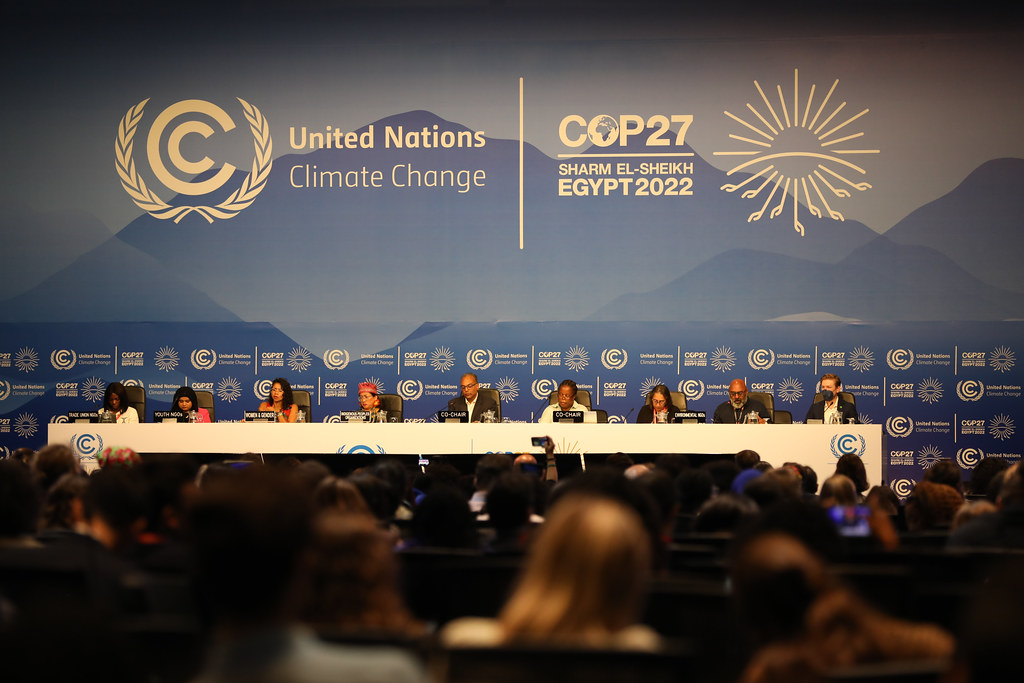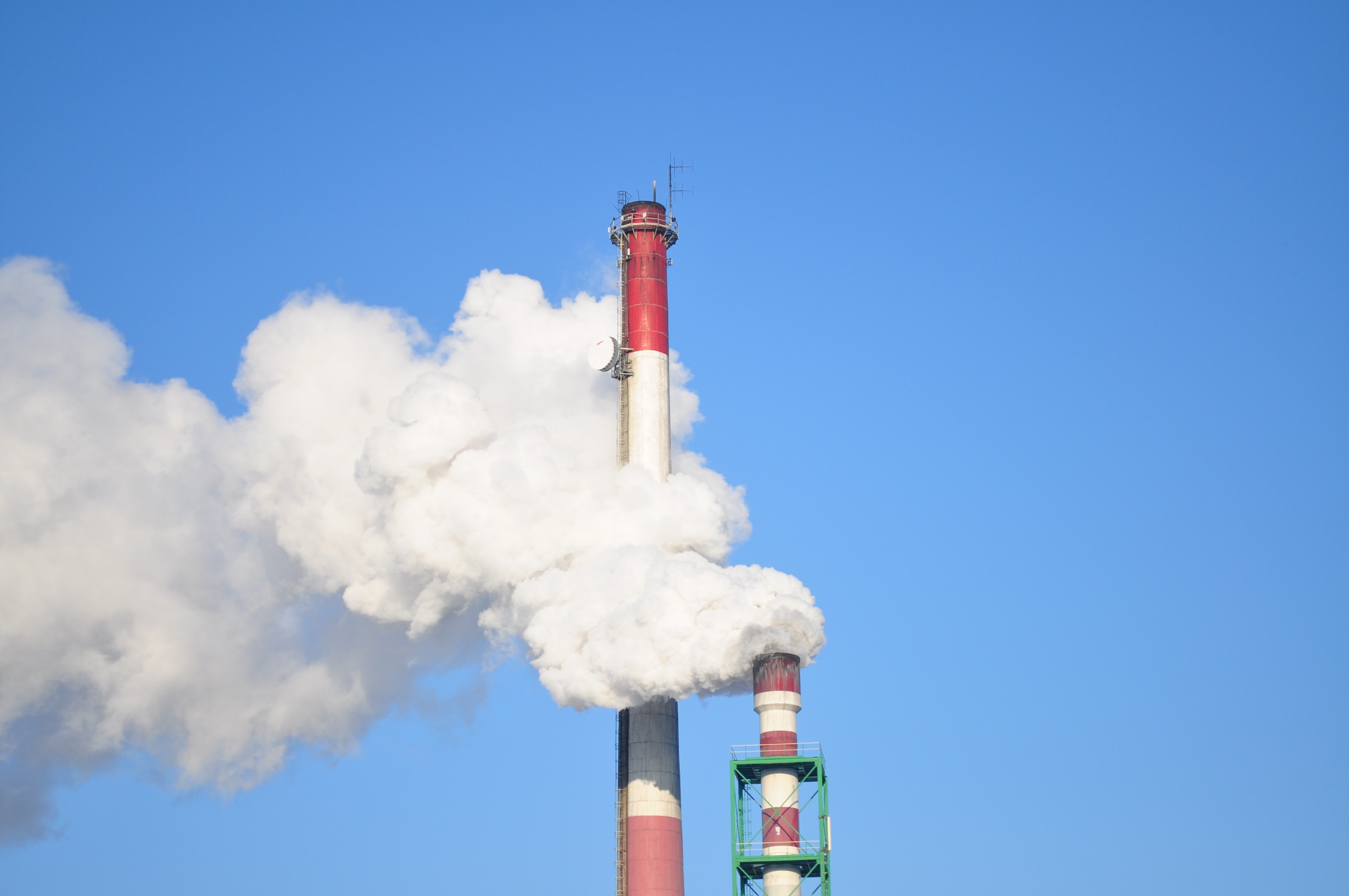The 27th Conference of the Parties to the United Nations Framework Convention on Climate Change (COP27) held in the Egyptian city of Sharm-el-Sheikh today since 6th November concluded today with a historic decision to establish and operationalize a ‘loss and damage fund’ to help the countries suffering from ill effects of global warming. Who will provide/get how much money for what and when is yet to be worked out. It is a symbolic gesture as the world is struggling with serious problems of resumption of disrupted global supply chains, post-pandemic economic recovery, high food and energy prices fueling record inflation, mainly caused by Russia-Ukraine conflict.
Climate change is one of the enduring concerns apart from terrorism and drugs menace on which countries have been struggling in last few decades. The climate crisis is part of the triple planetary crisis of climate change, pollution and biodiversity loss. Many small island countries face existential threat as rising sea levels may gobble them up in decades to come.
The global warming threat arises from emission of GREENHOUSE GASES (GHG) like Carbon Dioxide CO2, Hydrofluorocarbons HFC and Methane which trap the sunlight, thereby increasing global temperatures. This leads to slow and steady melting of frozen water bodies, rise in sea level, threatening the very existence of many small countries. Primary sources of GHG are vehicular and factory emission (using petroleum based fuels and coal) and dairy industry for milk and meat. HFCs are emitted from air-conditioning/ refrigeration units and other industrial processes. Methane emissions result from livestock rearing and other agricultural practices, decay of organic waste in solid waste landfills etc.
Dire predictions were made in the report of the Intergovernmental Panel on Climate Change (IPCC) about global warming due to incessant Carbon Dioxide emission and got the ears of top leaders assembled in Paris in 2015 with India taking a lead role.
The IPCC in its Fifth Assessment Report (AR5) published in 2014 had observed that there had been an increasing trend in the emissions of GHG since the advent of the industrial revolution, with about half of the emissions occurring in the last forty years. The risk of climate change is largely a function of total cumulative GHGs in the atmosphere.
IPCC had estimated that for temperature increase to remain below 2°C of pre-Industrial Revolution levels, the world must cap emission at about 2,900 Giga tonnes (Gt) of CO2 from all sources from the industrial revolution till the year 2100. Of this, the world had already emitted 1,900 Gt of CO2, by 2011 thus already consuming around two-thirds of this ‘carbon budget’.
This meant that out of the budget of 2,900 Gt, only 1,000 Gt remains to be used during 2012 to 2100. [This is my allusion to liquor in ‘short supply’. It is scientifically prudent to limit CO2, emission to 1000 Giga Ton by 2100. So who gets how much to drink, er, ‘right to pollute the atmosphere’ out of this ‘quota’ of 1000 GT till 2100 is the moot question.]
Who is responsible to mitigate global warming crisis?
Industrially advanced economies are historically the most prolific GHG emitters – USA (25% and EU 17% of total fossil carbon dioxide emissions from 1850 to 2019 !!!. China 13%, Russia 7% and such a large populous country like India has contributed just 3% of carbon dioxide emission 1850-2019!!
Per capita emission of India remains far below the world average at 2.4 tCO2e while USA has the highest at 14 tCO2e, followed by 13 tCO2e in the Russian Federation, 9.7 tCO2e in China, about 7.5 tCO2e in Brazil and Indonesia, and 7.2 tCO2e in the European Union. (tCO2e means tonnes (t) of carbon dioxide (CO2) equivalent (e)).
India’s per capita GHG emission is very low, about one-third of the global average. If the entire world were to emit at the same per capita level as India, there would be no climate crisis!. India’s rightful plea is that those who have in the past released maximum carbon dioxide in atmosphere should assume higher responsibility of mitigation now.
Between 1990 and 2019, the developed countries having only 17% of the global population have contributed to more than 44% of the cumulative CO2 emissions!!
Even with very high per capita GHG emission and high contribution to emission in the past, developed countries want to press large, developing economies like China and India to slow down GHG emissions. It is difficult without adequate access to funds and technology to switch to cleaner, greener, non-GHG emitting fuels.
The Kyoto Protocol adopted in 1997 was a historic turning point when legally binding targets were agreed for industrialised countries to reduce overall GHG emissions. Developed countries were required to reduce greenhouse gas emissions by at least 18 per cent below 1990 levels by the year 2020. In COP15 (Copenhagen, 2009), developed countries agreed to provide $100 billion annual funding to developing nations to support climate change mitigation action till 2020. The commitment was renewed with target shifted to 2025 in COP21 (Paris, 2015).
Kyoto protocol and Paris agreement both are legally binding with a difference. Kyoto Agreement had assigned specific targets for various countries but under Paris Agreement each country was expected to set its own targets NDCs – Nationally Determined Commitments – to mitigate global warming.
These targets were rather modest, grossly inadequate to meet the main objectives of UNFCCC but several developed countries backtracked. USA withdrew from Kyoto Protocol (President Bush, 2001) and from Paris Agreement (President Trump, 2017).
Now President Biden is attempting to reverse that course. USA under President Joe Biden wants to build international consensus around a target of countries committing to a ‘NET ZERO GREEN HOUSE GAS EMISSION’ target by 2050. New US Administration is keen to reclaim global leadership on climate change. The idea of NET ZERO GREEN HOUSE GAS EMISSION refers to a balance between the amount of greenhouse gases emitted into and the amount removed from the atmosphere. A country compensates for the greenhouse gases it generates by making provisions for absorption and removal of an equal amount. (Crudely put, emit only as much Carbon Dioxide as can be absorbed by trees etc.) The NET ZERO idea is strictly speaking diluting the commitments agreed in the Kyoto Protocol adopted in 1997.
The developed countries have faltered on delivery of finance, technology transfer, and capacity building support to developing countries. Global climate finance flows from developed to developing countries were USD 29.3–30.5 billion in 2019 and USD 28.2–33.2 billion in 2020, rather small relative to the overall needs of developing countries, just about 30 per cent of the annual investment needed to keep the global temperature rise well below 2 °C or at 1.5 °C. Overall climate action spending on mitigation and adaption was USD 803 billion in 2019–2020 but bulk of it is financing developed country projects. UNFCCC funds and multilateral climate funds approved a combined USD 2.9 billion and USD 3.5 billion for climate change projects in 2019 and 2020 respectively!!
India is making strong efforts to fight the climate crisis despite accounting for just 3% of the greenhouse gases emitted in the world since 1850! We are the world’s third largest producer and third largest consumer of electricity.
Our total power generation installed capacity has increased from 243 GW in March 2014 to 320 GW in March 2017 to 409 GW today. ( Thermal l 236GW, Solar 62GW, Hydro 47GW and Wind 42GW.) Solar power capacity in India has increased from 2.6 GW in March, 2014 to 62GW (Sep 2022). In 236GW thermal plants, 211GW is coal-fired, rest gas/diesel fired.
52% of our installed power capacity is from coal-fired thermal power plants which cause CO2 emission and the countries have been asked in Sharm-al-Sheikh declaration to accelerate efforts towards the phasedown of unabated coal power and phase-out of inefficient fossil fuel subsidies. Renewable energy capacity is about 37% of total and India will reach 40% renewable energy capacity well before 2030 as per target accepted under 2015 Paris Climate Change agreement. India’ goal of operationalising 500 GW renewable energy by 2030 is a major contribution to check emission of greenhouse gases.
Singling out coal hurts major coal-dependent country like India which imports more than 85% of its crude petroleum requirement. India would have preferred phasedown of all the fossil fuels (including petroleum and gas) but that does not suit the interests of developed countries !!
Pressure on India and China to reduce carbon emission reminds one of an irresistible analogy: When drinks are in short supply, heavy boozers become apostles of Alcoholics Anonymous to dissuade neo-boozers. [Alcoholics Anonymous is an international NGO founded in 1935, two years after the end of prohibition in the United States in December 1933. Its primary purpose is to help alcoholics “to stay sober and help other alcoholics achieve sobriety.]
Despite rather low per capita GHG emission, India is making big advances to switch to greener energy. ( CO2 emission MT per capita in 2018 USA 15.2 MT, China 7.4 MT and India 1.8 MT)
52% of our power generation capacity is coal-fired meeting about 75% of our energy needs. Switching from coal based power plants to solar, hydro, nuclear is not easy and renewable energy especially solar and hydro cannot be taken a reliable 24×7 power supply sources at steady voltage.
India is primarily focussing on CO2 for decarbonisation. Fluorinated gases like Hydrofluorocarbons and Methane are other potent GHG sources. India cannot do that much on these GHGs due to large-scale agricultural economy and air-conditioning requirements Nevertheless, mitigation is being attempted on all fronts.
India plans to raise the non-fossil fuel based energy capacity 500 GW by 2030. By 2030, 50% of the country’s energy requirements would be met using renewable energy sources. Carbon intensity of the economy would be reduced to less than 45% by 2030.
Besides steady expansion of solar and wind power network, certain specific lines of action deserve special mention among various specific plans on anvil. First is a major switchover from incandescent lights to CFL/LED/Solar lights. Second is ongoing incentive scheme to boost the demand of electric vehicles. Secondly, Indian Railways is working on an ambitious plan to capture 45 to 50 per cent market share in goods transport by raising annual freight loading to 3000 million metric tonne by 2027. It will reduce logistics cost as well as pollution. Railway is on course to achieve 100% electrification by 2023-24, already over 80%. Further, our scientists and technologists in NTPC and BHEL have developed and installed first ultra super critical thermal power plant 660MW (Khargone, MP) in August 2019. This improves the efficiency in coal use, requires less coal to produce same energy, almost 5% less.
Mission ‘LiFE’ (Lifestyle for Environment) was launched by our Prime Minister on October 20 to promote sustainable and healthy lifestyle, nudging individuals to practice simple yet effective environment-friendly actions in their daily lives. Government has released framework of Sovereign Green Bonds to raise finance for climate change action.
Given almost 70 to 75 per cent dependence for electric supply on coal (renewables cannot meet requirements of large n steady supply) we cannot reduce coal consumption very substantially unless there are real breakthrough in technology and climate change financing to mainstream futuristic fuels such as Hydrogen fuel, especially if it is hydrogen extracted from Methane, a GHG and significant contributor to global warming.
Instead of reducing high meat consumption that supports large-scale rearing of animals causing methane emission, developed countries want to target poor, subsistence farmers in developing countries to reduce methane emission.
Ultimately, the irony is that global warming is caused by the rich nations and its ill-effects will not spare them but in the short-term it is the poor nations that will suffer more. It is so unfair!
Sharm-el-Sheikh seems to disappoint India (again). Goggle why?
India@COP27: Low culpability, high mitigation expectation and commitment-Dr. Subhash Chandra Pandey


